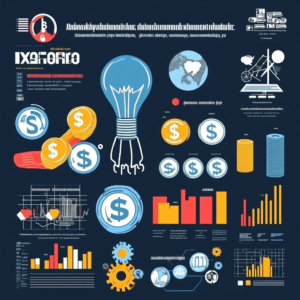
Revolutionary Supramolecular Crystals Enable High-Capacity Hydrogen Storage
In a world that craves cleaner energy solutions like a thirsty man in a desert, there's a thrilling developments surfacing in the realm of hydrogen storage — specifically, organic supramolecular crystals. Imagine a lightbulb flickering on above the heads of scientists, illuminating the daunting challenges faced by fuel cell vehicles (FCVs). This revolutionary breakthrough paints a promising picture of our transition to greener transport. And let me tell you, reader, this isn’t just an academic exercise; it’s a genuine ride on the rollercoaster of innovation that could change our energy landscape for good.
Let’s tackle the hydrogen storage conundrum, shall we? Hydrogen's allure is undeniable — it boasts an energy content thrice that of petrol when measured on a gram-for-gram basis. This should be music to our ears, right? Yet herein lies the rub: storing hydrogen is akin to trying to catch smoke with your bare hands. The low volumetric density of hydrogen forces us to think big — and I mean really big. Even when we cram it into tanks at a staggering 700 times atmospheric pressure (seriously, you need muscles just to imagine it!), we still require oodles of space to store anything useful. Picture this: to match the energy packed into just one liter of petrol, we’d need a whopping 7 liters of compressed hydrogen. Take that number, and think of the design limitations for vehicles. It’s a bit of a buzzkill, isn’t it?
Now, let’s break down the U.S. Department of Energy’s (DoE) gauntlet for hydrogen storage systems laid out for FCVs. They’re not just casually tossing out targets; they’re setting some serious benchmarks here. They demand storage capacities exceeding 50 grams of hydrogen per liter of material and foist upon us the requirement that at least 6.5% of the system’s weight should be hydrogen itself. Sure, some materials have managed to tick one of these boxes, but achieving both in harmony? That’s like trying to find a unicorn in a haystack.
Enter stage left, an international research team featuring Fraser Stoddart, a burgeoning star following his 2016 Nobel Prize in Chemistry. Now, if you expected the usual drab lab coats and clipboard-wielding scientists, think again! Stoddart’s team didn’t just break the mold; they shattered it! They introduced a new class of organic supramolecular crystals that shoot past the DoE's targets like a rocket. The brilliance of these crystals lies in their honeycomb structure, weaving together organic molecules in a way that enhances stability through a process known as catenation. Let’s take a moment to appreciate that. Instead of playing hide and seek with stability, these crystals say, “We’ve got this!”
So, what’s the scoop on the new material? It packs a punch — 53.7 grams of hydrogen per liter, and hydrogen contributes a sweet 9.3% to the system's overall weight. A standing ovation, if I may add! The structural robustness, thanks to our buddy catenation, keeps the material stable and porous, a far cry from the usual suspects which often suffer from reduced surface areas, like a balloon losing air. Plus, it doesn’t stop there. This magical material absorbs and releases hydrogen like a pro, effortlessly managing variations in pressure. At this rate, hydrogen storage may just get a standing ovation!
But what does this breakthrough mean for our charming fleet of fuel cell vehicles? Oh, it’s huge! We’re talking about enhanced driving ranges here. By maximizing both volumetric and gravimetric storage, these crystals are like the second coming of range extenders you'd never thought you'd need. They hold the potential to transform FCVs from urban curators to long-distance champions, making everyday use sound like a love song for eco-enthusiasts everywhere.
Consider the space efficiency: these incredible crystals can stash away more hydrogen without asking for extra real estate. We’re on the verge of seeing more compact designs that don’t compromise on performance. It's like upgrading your phone to a slimmer version while somehow packing more features in. And nobody loves shaking off potential costs and safety concerns like this material. By minimizing the necessity for those intimidating high-pressure storage tanks we all shudder at, we’re looking at reduced costs and a significant mitigation of safety risks. It’s like making a delicious cake and cutting down on the calories at the same time — who wouldn’t want that?
The introduction of organic supramolecular crystals for hydrogen storage could very well be the harbinger of a bright new era in clean energy solutions. As research pushes forward, scaling up this technology is sure to take us on a thrilling journey toward more efficient, practical FCVs. The highway to a cleaner future may soon be paved with these crystalline wonders, and we should all be ready to jump in for the ride.
So, how about lighting the way for yourself and keeping up with the electrifying pace of these advancements in hydrogen storage and automation? Want to stay in the loop with the latest news? 🚀 Subscribe to our Telegram channel: @channel_neirotoken for updates that promise to keep you entertained and informed about where this adventure is heading next!

